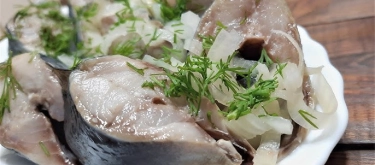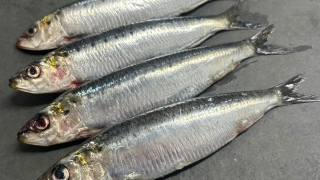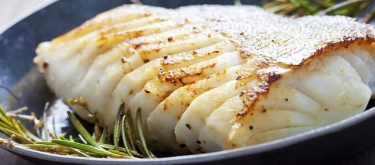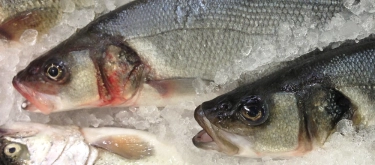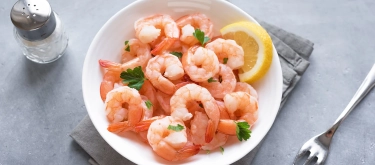Anchovy: Taste Profile, Aroma, Benefits and Health Risks
Anchovies are small, oily fish renowned for their bold, distinctive taste and versatile culinary uses. A staple ingredient in Mediterranean and Asian cuisines for thousands of years, anchovies are beloved for their powerful umami flavor, transformative culinary properties, and notable nutritional benefits. Often salted, cured, or preserved in oil, anchovies are the flavorful backbone of dishes like Caesar salads, pasta sauces, tapenade, and various seafood preparations.
Anchovies are fish-based products, thus unsuitable for vegetarians, vegans, or individuals with fish allergies. They contain high levels of sodium, especially in cured forms, requiring moderation for those with hypertension or sodium-sensitive diets. Anchovies are gluten-free but verify labels on processed products for additives.
What does Anchovy taste like?

Complete Sensory Description
Taste:
Anchovies deliver an intense, deeply savory (umami), salty taste, often accompanied by subtle fishiness and gentle briny notes. Their flavor, while powerful, can enhance dishes significantly when used sparingly, providing depth, complexity, and culinary richness.
Aroma:
Fresh anchovies have a mild, marine aroma. However, salted or cured anchovies exhibit strong, briny, and pungent scents, imparting distinctively savory fragrances upon cooking or mixing into dishes.
Texture:
Fresh anchovies possess soft, tender, flaky flesh. Salted or oil-packed anchovies are firm yet slightly tender, melting easily into sauces, dressings, or dishes during cooking, offering velvety textures when incorporated correctly.
Appearance:
Fresh anchovies feature shiny, silver-gray to bluish exteriors. Preserved anchovies typically appear dark reddish-brown or grayish, with a firm, compact appearance due to curing or preservation processes.
Varieties and Culinary Uses
-
Fresh Anchovies:
Mild, delicate taste; ideal for grilling, frying, marinating (e.g., Italian-style marinated anchovies—“alici marinate”). -
Salted Anchovies:
Intensely flavorful, salty; widely used sparingly in sauces, dressings, pasta dishes, or pizzas for umami richness. -
Oil-Packed Anchovies:
Convenient, milder salted variety, easily incorporated into dressings (Caesar salad), sauces (puttanesca), or spreads (tapenade). -
Anchovy Paste:
Smooth, concentrated umami flavor; used as seasoning, flavor base, or quick addition to dishes requiring depth.
In-depth Flavor Analysis
-
Umami-Richness:
Anchovies possess exceptional umami intensity, providing savory depth that amplifies flavors, significantly enhancing dishes even in small amounts. -
Salty & Briny Notes:
Salting or curing processes intensify anchovies’ inherent brininess, contributing essential saltiness and complexity to dishes. -
Flavor Transformative:
When heated, anchovies melt easily, infusing dishes with deep savory notes without overpowering fishiness, creating harmonious flavor bases in cooking. -
Flavor Evolution:
Anchovy flavor transforms dramatically during cooking—initially intensely salty and pungent, mellowing into rich, subtle savory undertones when incorporated into sauces, dressings, or cooked preparations.
Culinary Applications
-
Sauces and Dressings:
Essential ingredient in Caesar salad dressing, pasta sauces (puttanesca), vinaigrettes, and marinades, providing depth and complexity. -
Pizza and Flatbreads:
Common pizza topping, particularly traditional Mediterranean pizzas, adding distinctive savory notes. -
Seafood Dishes:
Fresh anchovies grilled, fried, or marinated provide subtle yet delicious seafood preparations. -
Appetizers and Tapas:
Marinated anchovies, Spanish “boquerones,” or Mediterranean anchovy tapenade served as appetizers or snacks.
Selection and Storage
Selecting Quality Anchovies:
- Fresh anchovies should have shiny, firm, bright eyes, and mild marine smell.
- Salted or preserved anchovies should have compact, firm texture, uniform color, and minimal off-odors or excess moisture.
Storage Recommendations:
- Fresh anchovies should be refrigerated below 4°C (39°F), consumed within 1–2 days.
- Salted or oil-preserved anchovies should remain refrigerated after opening, tightly sealed, and used within 1–2 months for optimal flavor and quality.
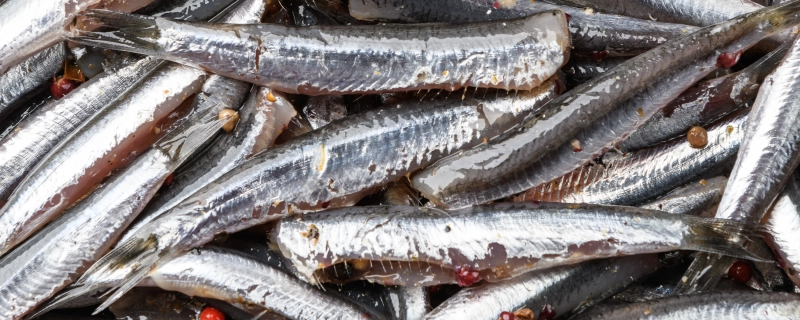
Nutritional Insights
-
Omega-3 Fatty Acids:
Anchovies are rich sources of omega-3 fatty acids beneficial for heart health, brain function, inflammation reduction, and overall wellness. -
High-Quality Protein:
Provides complete, easily digestible protein essential for muscle maintenance and body function. -
Minerals and Vitamins:
Excellent source of calcium, selenium, iron, phosphorus, vitamin B12, niacin, and vitamin D, contributing significantly to bone strength, metabolism, immune support, and energy production. -
Low Caloric Density (Fresh):
Fresh anchovies are relatively low in calories, high in nutrients, suitable for balanced, nutritious diets when prepared correctly.
Expert Insights & Culinary Tips
-
Moderation & Balance:
Experts recommend using anchovies sparingly due to intense flavor; small quantities deliver notable culinary enhancement without overpowering dishes. -
Pairing Recommendations:
Anchovies pair excellently with garlic, lemon, tomatoes, olives, capers, herbs (parsley, basil), and olive oil, creating harmonious, Mediterranean-inspired flavors. -
Cooking Techniques:
Dissolve anchovies gently over low heat to incorporate seamlessly into sauces, dressings, or sautéed dishes without harsh fishiness.
Interesting and Curious Facts
- Anchovies have been consumed since ancient Roman and Greek times, historically prized for culinary and nutritional value, particularly in garum (fermented fish sauce).
- Anchovies remain a foundational ingredient in modern Mediterranean cuisine, prominently featured in iconic dishes like Italian pasta sauces, Spanish tapas, and classic salads.
- Despite their controversial flavor profile for some, anchovies are renowned culinary enhancers, particularly respected in professional culinary circles for their ability to elevate dishes through deep umami notes.
How to Enjoy Anchovies
- Incorporate into Caesar salad dressing or classic puttanesca sauce for depth and flavor complexity.
- Add finely chopped anchovies or paste into sauces, vinaigrettes, marinades, or tapenades for umami enrichment.
- Enjoy fresh anchovies marinated (“alici marinate”) or grilled simply with lemon, garlic, and herbs for delicious Mediterranean-inspired dishes.
- Pair anchovies sparingly with pizzas, flatbreads, or bruschetta for authentic, flavorful experiences.
Harm and Dietary Considerations
-
High Sodium Content:
Salted or cured anchovies contain significant sodium, requiring moderation for individuals managing blood pressure or dietary sodium intake. -
Fish Allergies:
Individuals allergic to seafood should avoid anchovies entirely. -
Mercury & Contaminants:
Anchovies have low mercury levels due to small size and short lifespan, considered safe compared to larger seafood species.
Final Thoughts & Sensory Journey
Anchovies offer a distinctive culinary experience defined by their bold, savory richness, intense umami flavor, and transformative cooking qualities. Appreciated for their culinary versatility and nutritional density, anchovies remain indispensable in kitchens worldwide, elevating dishes to gourmet levels through subtle yet impactful culinary enhancement.
Resources
- McGee, H. (2004). On Food and Cooking: The Science and Lore of the Kitchen. Scribner.
- USDA FoodData Central (2023). Anchovies Nutritional Profile & Safety Guidelines.
- Food and Agriculture Organization (FAO). (2021). Small Pelagic Fish: Nutritional Benefits and Culinary Importance.

